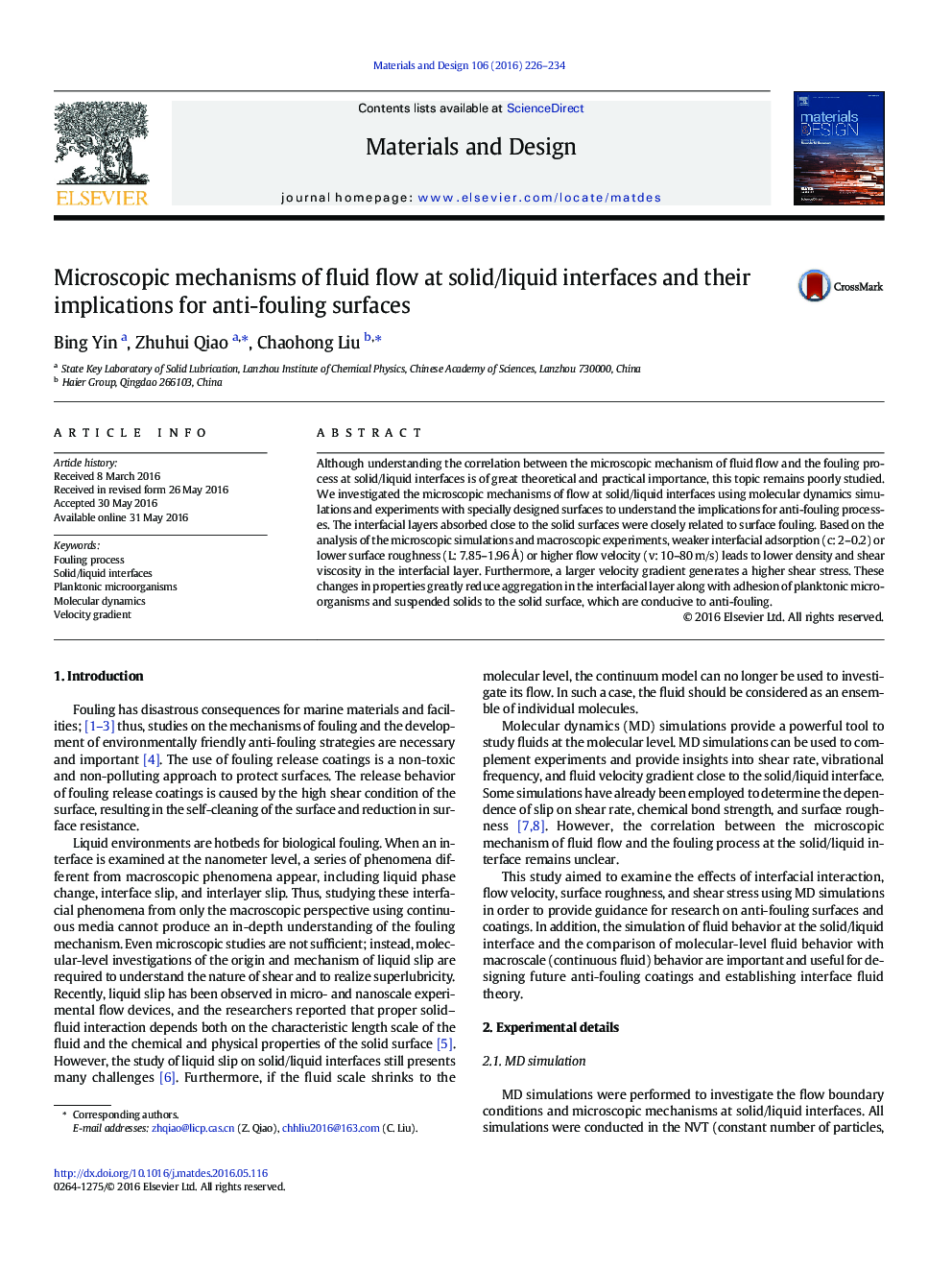| کد مقاله | کد نشریه | سال انتشار | مقاله انگلیسی | نسخه تمام متن |
|---|---|---|---|---|
| 827883 | 1470276 | 2016 | 9 صفحه PDF | دانلود رایگان |
• The interfacial microscopic mechanisms and implications for anti-fouling were studied.
• Simulation and experimental results were got to verify the rationality of analysis.
• Performance of anti-fouling relies on the properties of interfacial layer.
Although understanding the correlation between the microscopic mechanism of fluid flow and the fouling process at solid/liquid interfaces is of great theoretical and practical importance, this topic remains poorly studied. We investigated the microscopic mechanisms of flow at solid/liquid interfaces using molecular dynamics simulations and experiments with specially designed surfaces to understand the implications for anti-fouling processes. The interfacial layers absorbed close to the solid surfaces were closely related to surface fouling. Based on the analysis of the microscopic simulations and macroscopic experiments, weaker interfacial adsorption (c: 2–0.2) or lower surface roughness (L: 7.85–1.96 Å) or higher flow velocity (v: 10–80 m/s) leads to lower density and shear viscosity in the interfacial layer. Furthermore, a larger velocity gradient generates a higher shear stress. These changes in properties greatly reduce aggregation in the interfacial layer along with adhesion of planktonic microorganisms and suspended solids to the solid surface, which are conducive to anti-fouling.
Figure optionsDownload as PowerPoint slide
Journal: Materials & Design - Volume 106, 15 September 2016, Pages 226–234
